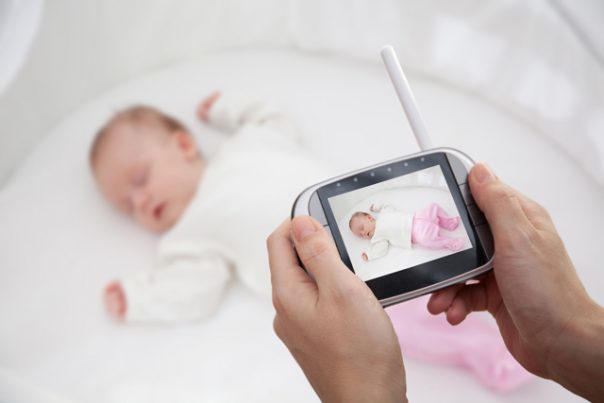
Researchers develop low-cost graphene device that could serve as baby monitor
Tuesday, July 03, 2018 by David Williams
http://www.futuresciencenews.com/2018-07-03-researchers-develop-low-cost-graphene-device-that-could-serve-as-baby-monitor.html

Baby monitor technology is in dire need of an update, and a group of researchers in the U.K. may have found just the thing needed to make it happen.
Existing baby monitors can be rather cumbersome in certain configurations. In many cases, using them results in an overwhelming mess of various wires that are all needed in order to monitor vital signs of sick babies.
Now, a team of U.K. researchers suspects that they could turn the entire baby monitor industry upside down with a newly created device they made with the miracle material called graphene. Based on the results of their research, baby monitors could be much less troublesome to deal with.
A report on the study conducted by the researchers, who hailed from the University of Sussex, explained how the use of graphene enabled the creation of an entirely new kind of baby monitor. It is said that initially, the researchers weren’t even trying to make a baby monitor at all. Indeed, they were just trying to test out a theory that involved mixing oil, water, and graphene together. In the end, they realized the enormous potential that the new device held.
According to Alan Dalton, the lead researcher on the project, their team’s invention was created out of simple curiosity. “If you think about mixing oil and water (i.e., vinegar) when making a salad dressing, the two liquids will always separate over time,” he said. “It’s quite well known that adding soap-like molecules or fine powders to oil and water can stop them from separating. What we wanted to know was whether graphene could achieve the same effect.”
After performing their experiments and taking a look at the results, the researchers learned that the idea does indeed work – that graphene can be used to hold oil and water together. And not only that, but that the resulting liquid structures were able to conduct electricity, especially after being stretched. This showed the researchers that any subtle movements that would either stretch or compress the material could be translated to a mechanism for detecting even the most subtle movements.
Matthew Large, the lead author of the research paper on the project, said that their invention has so far shown itself to be superior to similar existing solutions. “What’s quite exciting about this new type of conductive liquid is how sensitive it is to being stretched,” he explained. “The sensitivity of this new kind of strain sensor is actually much higher than a lot of existing technologies, and it is the most sensitive liquid-based device ever reported, by quite a significant margin.”
The team opted to contain their graphene emulsion in a tiny tube that they used for testing. After proving its feasibility through a number of experiments detailed in their paper, the team concluded that a monitor that is based on the technology could be made rather cheaply and wouldn’t need any special knowledge to operate. They are currently working with an unnamed commercial partner to develop products that are based on their new tech to be released at some point in the future. (Related: The hidden dangers of wireless baby monitors.)
These forthcoming graphene emulsion-based technology could indeed be the solution for current baby monitor problems, but some are not convinced. David King, a pediatrician and lecturer in pediatrics at the University of Sheffield, warns that until any real-world product that use the technology exists, it will be hard to believe its efficacy. He described the research as “novel,” and noted that the researchers merely “extrapolated their findings” to arrive at their conclusions.
King also pointed out that any claims that such a technology can help prevent Sudden Infant Death Syndrome (SIDS) need to be tempered. “The premise that measuring vital signs [will] reduce the incidence of SIDS is unsupported by current evidence,” he remarked. Until the researchers create any real working prototypes using this technology, it will likely remain inside the lab setting for the foreseeable future.
Read more about other next-generation devices at Inventions.news.
Sources include:
Tagged Under: Tags: baby monitor, carbon, devices, future tech, Futuristic, gadgets, Graphene, infant health, innovation, inventions, technology, Wearables





